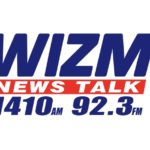Education
With declining enrollment, increasing building costs, La Crosse Schools seeking public input on long-range facility plan
The La Crosse School District put out a lengthy news release Wednesday in regards to its long-range facility plan and is seeking the public’s input.
Consolidation of the middle schools and high schools appears to be the answer, due to increase costs of building maintenance and a declining enrollment that will continue over the next decade.
Some of the highlights into the reasoning behind that include:
- ENROLLMENT: 1,300 less students than in 2000 with a declining enrollment expected over the next 10 years. Each student represents about $11,300 in potential revenue.
- CAPACITY: The district maintains 15 buildings, including two high schools, while other districts of a similar size have around 10-11.
- INFRASTRUCTURE: These buildings are costlier to maintain and so out of date, they no longer meet today’s modern educational needs. Deferred maintenance needs is at $81 million, while the annual budget for that work is $1.2 million. The five oldest buildings have $25 million in infrastructure costs.
The district will hold two public input sessions, from 6-8 p.m. on April 27 and May 3, at Lincoln Middle School. More information on the long-range facility planning work done so far, can be found here.
Here is the full news release:
Change can be scary. Few people like it, but change is inevitable. Change can be viewed as a challenge or as an opportunity. In the School District of La Crosse, the power of progress is celebrated. The district always works to capitalize upon opportunities to continually improve positive educational experiences and outcomes for students, regardless of the challenge. The goal is to always do what is best for kids.
“We are excited to wrap up our long-range facility planning process,” said Superintendent of Schools Dr. Aaron Engel. “With our facilities, we want to provide students with modern learning environments and right-size facilities to reduce operating and deferred maintenance costs. We have a few challenges with our facilities, but we also have great opportunities.”
The first challenge is declining enrollment. Declining enrollment has a significant impact on funding. Each student represents about $11,300 in potential revenue. Due to lower birth rates over the last three decades, the district now has 1,300 fewer students than in 2000 and enrollment is projected to continue to decline over the next decade.
Over the years, the district has made substantial reductions in all areas of the budget to keep up with these financial limitations but continues to face budget deficits annually. Declining enrollment results in less revenue, underutilized buildings, inefficient staffing, and increased operational costs.
A second challenge is excess capacity. School districts the size of La Crosse typically have fewer buildings. The School District of La Crosse currently maintains 15 buildings including two high schools, three middle schools, nine elementary buildings, and one charter school building. School districts of similar size average 10.5 buildings with one high school, two middle schools, and seven elementary schools. La Crosse is the smallest district with two high schools in Wisconsin.
The third challenge is aging buildings. The district’s aging buildings have higher operating costs, substantial deferred maintenance, and no longer meet students’ modern educational needs. An assessment of the district’s deferred maintenance needs indicates $81 million in expenses with an annual budget of only $1.2 million to address those needs. A facility assessment of the five oldest school buildings in the district (the middle schools and Emerson and Spence Elementary) indicates $25 million in infrastructure costs for those buildings alone.
The school district’s aging buildings have been well taken care of and continually modified to meet new expectations. However, the oldest buildings do not meet modern ADA codes, have undersized classrooms, lack specialized spaces for students with disabilities, music, art, and physical education, and limit instructional practices.
“All students eventually go through the middle and high schools, so by focusing our facility planning on a 6-12th grade solution, we will achieve the most positive impact for the most students at one time,” said Engel. “The largest maintenance costs and greatest needs for improvement are at our middle schools. Building one high school and moving our middle schoolers into the existing high schools immediately improves the learning environment for half of our student body. This also provides us with the largest cost savings as early as possible through our long-range facility plan.”
Consolidating the middle and high schools will increase educational opportunities for students. Currently, there are classes, programs, and even athletics that cannot be run because there are too few students at one school to do so. As a result, the district already has a number of co-ops between schools that run so that programs can continue that wouldn’t otherwise.
Due to sound long-range fiscal management, district debt about to be paid off from previous referendums, and current low-interest rates, now is the time to address these challenges and take advantage of opportunities to invest in students, invest in facilities, and invest in the community.
In the coming weeks, the public is invited to learn more about the district’s long-range facility plan during a series of community informational sessions. These sessions will be held on April 27 and May 3 from 6:00 – 8:00 p.m. and hosted at Lincoln Middle School in La Crosse.
For more information on our long-range facility planning work done so far, please visit www.lacrosseschools.org.
